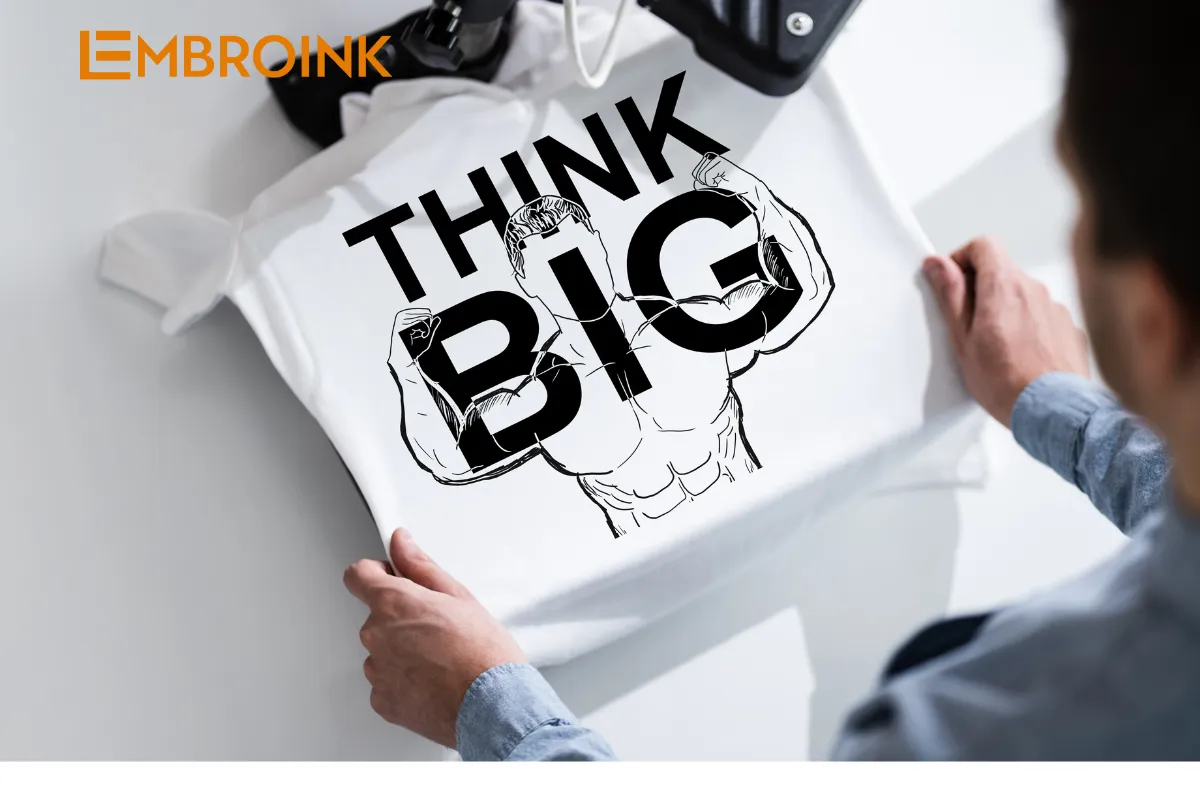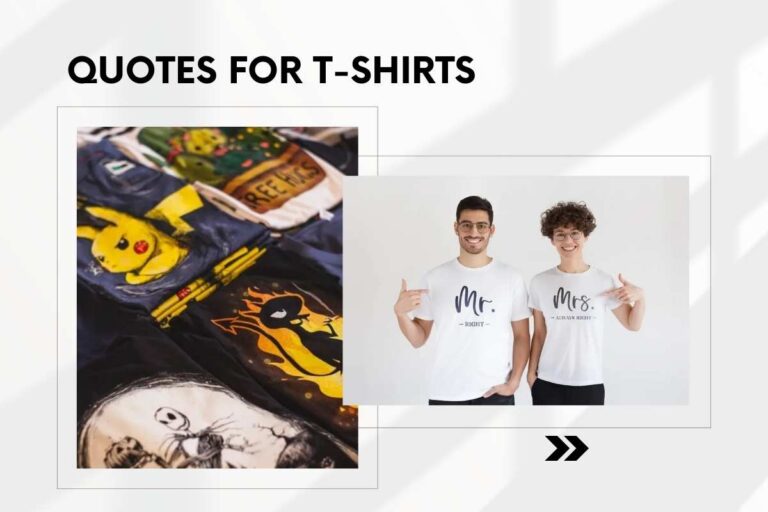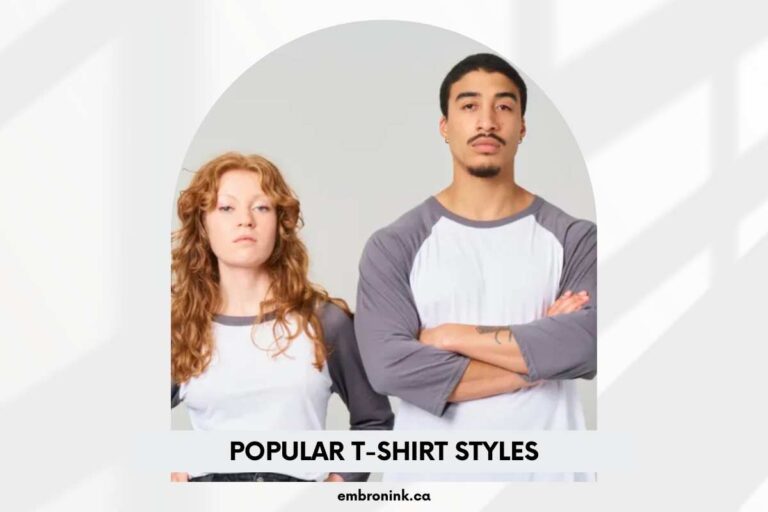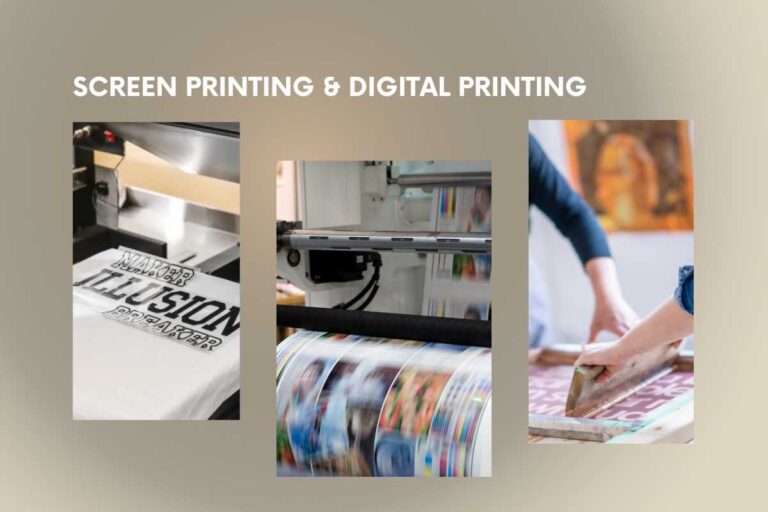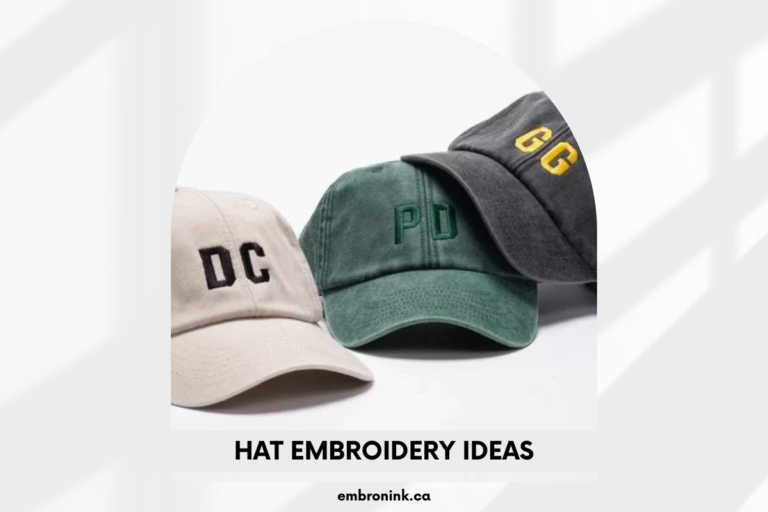Which method is better for your designs? DTG or DTF printing
DTF printing and DTG printing are popular techniques for applying designs to garments. Each method has its own unique features and advantages, making the choice between them a bit tricky.
Gaining a deeper understanding of these printing methods can help you determine which is best for your designs or brand, whether you’re starting a t-shirt business or simply want to learn more about printing techniques. So, what are the differences, benefits, and ideal uses of DTG vs. DTF printing? Keep reading with EmbroInk to explore everything you need to know about these fulfillment methods.
What is DTF printing?
Direct-to-Film (DTF) printing is an emerging technique that’s gaining popularity for its excellent color accuracy, detail, and durability. DTF prints not only look fantastic but also offer several advantages, such as low production costs, a wide range of color options, and the ability to print on both dark and light garments. Additionally, it works well on various materials like polyester, cotton, nylon, and fleece.
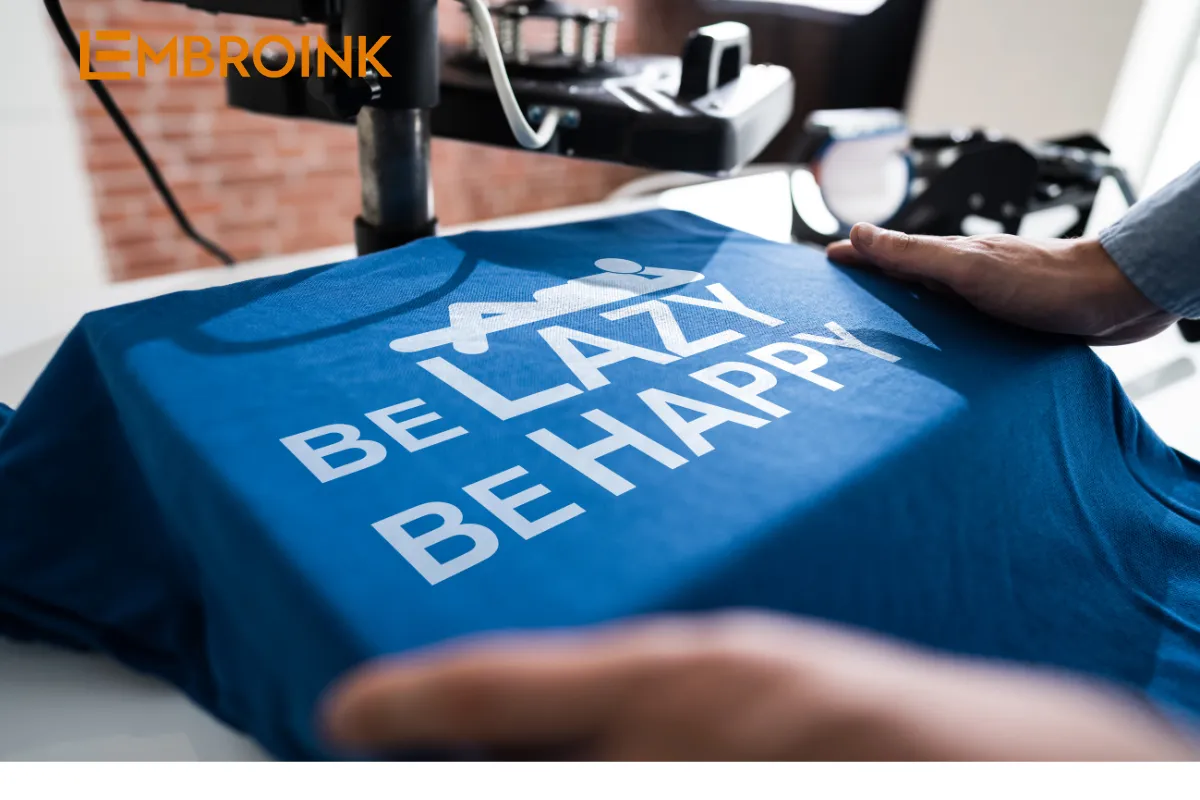
How does DTF printing work?
Here are the basic steps involved in DTF printing:
- Design printing: The design is printed onto a special transfer film using water-based inks.
- Adhesive application: The inked film is coated with a unique adhesive powder.
- Heat transfer: The design is transferred onto the fabric using a heat press.
Although the process involves multiple steps, the print time for a single garment is just a few minutes.
What is DTG printing?
Direct-to-Garment (DTG) printing is a method where ink is sprayed directly onto the garment, allowing for high-quality, full-color prints. DTG prints are soft, breathable, and highly durable, making them a popular choice for apparel.
This technique works best with fabrics like cotton, bamboo, and other natural materials, as these materials absorb the ink effectively. DTG is one of the leading methods in on-demand production.

How does DTG printing work?
DTG printing involves fewer steps compared to DTF:
- Pre-Treatment: The garment is treated to help the ink bond better with the fabric.
- Printing: The garment is mounted on a platen, and water-based inks are sprayed directly onto the fabric.
- Curing: The ink is cured to enhance the print’s durability.
One of the main advantages of DTG printing is its ease of use for one-off prints, with minimal setup time required. Printing a single t-shirt takes just a few minutes, and production costs remain low.
What are the differences between DTG and DTF Printing ?
While DTG and DTF printing may seem similar, there are key differences between them. Both methods deliver excellent results, but each has its own unique characteristics.
Print quality and durability
DTF Printing
- Quality: DTF prints are known for their excellent quality. Although they may have a slightly plastic feel initially, they become softer after a few washes. The prints are smooth and elastic, ensuring longevity.
- Durability: DTF prints are resistant to cracking and can withstand heavy use and washes in cold to lukewarm water without fading. However, washing in very hot water may cause small cracks.
- Best for: Ideal for photos, colorful designs, graphics, and fine art. The ink sits on top of the fabric, resulting in a thin print that doesn’t feel bulky.
DTG printing
- Quality: DTG printing also provides fantastic quality. New prints might feel slightly rough but smooth out after a few washes. They generally have a rubbery feel that is not unpleasant to the touch.
- Durability: DTG prints are durable when proper care instructions are followed. They won’t crack, peel, or fade over time, making them surprisingly resilient.
- Best for: Great for colorful designs, graphics, and text. However, the print may appear less vibrant on black or dark garments since the fabric absorbs the ink.
Both printing methods produce high-quality results, but your choice will depend on your specific design needs and fabric type.
Print complexity
When it comes to print complexity, DTF printing stands out as the superior option.
DTF Printing
- Capabilities: DTF printing is highly versatile and can accommodate photos, detailed full-color designs, fine art, small text, and graphics. The prints produced are sharp, clear, and realistic, closely resembling the original design. This makes DTF an excellent choice for high-quality custom apparel and promotional products.
- Gradients: DTF printing effectively supports gradient designs, allowing for smooth color transitions that enhance visual appeal. However, it’s important to note that the base color layer uses white ink, which can influence the gradient or transparency of your design. This means that careful consideration should be given to how gradients are designed to ensure the final product maintains the desired look and effect.
DTG Printing
- Capabilities: DTG printing excels at producing vibrant, colorful designs, graphics, photos, fine art, and small text. The prints are known for their vividness and detail, making them ideal for a wide range of applications, from custom t-shirts to artistic apparel. This method allows for intricate designs with smooth color transitions, ensuring that the final product looks professional and eye-catching.
- Challenges: One of the main challenges with DTG printing is that the fabric absorbs the ink, which can sometimes affect the clarity and vibrancy of the design. This absorption may lead to prints that appear less bright, especially on darker or more colorful garments. Additionally, printing gradients can be trickier with DTG, as the ink’s interaction with the fabric may cause the gradient to lose its smoothness. To achieve the best results, it’s crucial to adjust your design accordingly, ensuring that colors are optimized for the specific fabric being used. This might involve using techniques such as avoiding overly complex gradients or selecting fabrics that better showcase the design’s colors.
Both methods offer great potential, but DTF has an edge in handling complex designs and gradients effectively.
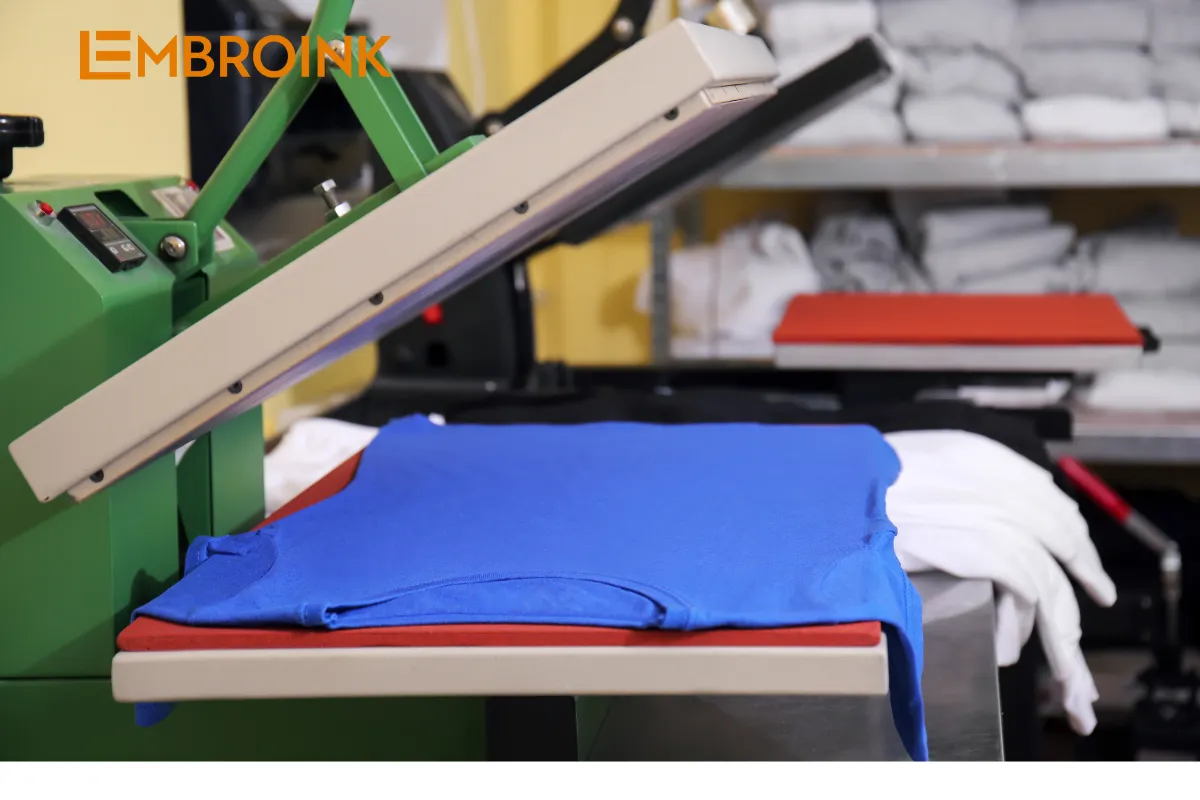
Color vibrancy
DTF printing utilizes primary colors (CMYK: cyan, magenta, yellow, and black) along with a white base ink, ensuring that every design is vibrant and vivid, regardless of the fabric color or type.
DTG printing also employs the CMYK color model for all designs, but the white base ink is only used for prints on black or colorful garments, not on white fabrics. Since the ink is sprayed directly onto the fabric, it gets absorbed, which can result in prints that may not be as bright or vivid as those produced by DTF. Nonetheless, DTG still delivers impressive print quality.
Fabric suitability
One of the advantages of DTF printing is its versatility; it can be used on a wide range of fabrics, including polyester, cotton, fleece, nylon, and various blends. This flexibility allows for more product options when designing for your store.
In contrast, DTG printing is best suited for natural fabrics such as cotton, bamboo, and linen. The ink bonds more effectively with natural fibers compared to synthetic materials, making it the ideal choice for these types of fabrics.
Quantity
If you need a printing technique that fits well with print-on-demand production, DTF printing is an excellent choice. It allows for printing just one shirt or placing bulk orders, making it ideal for the on-demand model.
Similarly, DTG printing is suitable for both small and large orders. It’s one of the most popular methods among dropshipping companies because it’s easy to use for any quantity you need.
Eco-Friendliness
If you’re looking for a sustainable fulfillment method, DTF printing is a solid choice. This technique allows for one-off printing, reducing concerns about unsold stock and eliminating overproduction. Additionally, the inks used in DTF are water-based and non-toxic, making them environmentally friendly. The transfer film is often recyclable, resulting in minimal waste during the printing process.
DTG printing is also a good eco-friendly option. Like DTF, it supports one-off production, which helps prevent overproduction by allowing you to order only what’s needed. For instance, Printful partners with Kornit, whose DTG machines generate nearly zero wastewater and consume less energy, thereby lowering the carbon footprint.
Moreover, Kornit’s digital printers use water-based vegan inks that are formulated, tested, and produced in their own factories. These inks are non-hazardous, toxin-free, biodegradable, and contain no animal by-products, further enhancing their eco-friendly credentials.
On-Demand fulfillment
Both DTF and DTG printing are excellent techniques for on-demand fulfillment. You can order just one item or multiple pieces without a change in cost, although bulk orders may qualify for discounts.
For instance, at Printful, products printed using DTF and DTG are created only after you or your customers place an order. Printful also provides discounts for bulk orders, making it a great option if you need to purchase multiple items.
Upfront investment
If you partner with a print-on-demand company like Printful, there’s no need for an upfront investment when selling DTF or DTG products. Your items are produced only when a customer places an order, allowing you to collect payment upfront, pay Printful for the product, and keep the profit.
However, if you prefer to print garments yourself, you’ll need to invest in a DTF or DTG printer, blank products, inks, and other materials for fulfillment and shipping. It’s essential to consider whether this significant investment is worthwhile, especially when you can dropship products featuring your designs under your brand.

